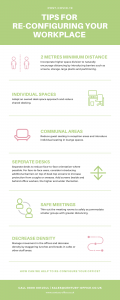Having plants in an office can bring numerous benefits to the environment and the people who work there. In this article, we will discuss some of the most significant benefits of having plants in an office.
- Air purification: Plants have the unique ability to absorb toxins and pollutants from the air, which can significantly improve air quality. Indoor air quality can be up to five times worse than outdoor air, and plants can help reduce the concentration of harmful chemicals and pollutants in the air.
- Stress reduction: Plants have been shown to reduce stress and anxiety levels in the workplace. Studies have found that just looking at plants can help reduce stress levels, and having plants in the office can create a calming and relaxing atmosphere, which can help improve productivity.
- Increased productivity: Having plants in the office can increase productivity levels by improving air quality, reducing stress, and creating a more visually appealing environment. A study by the University of Exeter found that productivity levels increased by 15% when plants were introduced to the workplace.
- Noise reduction: Plants can also help reduce noise levels in the office. Plants absorb sound, which can help reduce the amount of noise that is transmitted through walls and floors. This can create a more peaceful and comfortable environment, which can help improve focus and productivity.
- Improved health: Plants can have a positive impact on health and wellbeing. Studies have found that having plants in the office can help reduce symptoms of illnesses such as coughs and sore throats, as well as improve overall wellbeing and happiness.
- Improved creativity: Plants can also help improve creativity levels. Studies have found that being surrounded by plants can help stimulate creativity and improve problem-solving skills, which can be beneficial in a work environment.
- Aesthetics: Finally, plants can help create a more visually appealing environment. A well-placed plant can help add color and life to an otherwise dull or sterile office space, which can improve employee morale and satisfaction.
In conclusion, having plants in an office can bring numerous benefits to both the environment and the people who work there. Plants can help purify the air, reduce stress levels, increase productivity, reduce noise, improve health, stimulate creativity, and create a more visually appealing environment. With all of these benefits, it’s no wonder that many businesses are choosing to incorporate plants into their office spaces.

